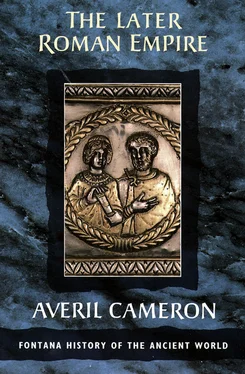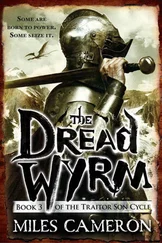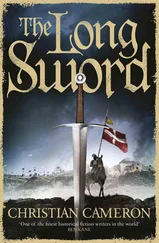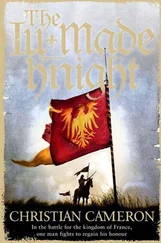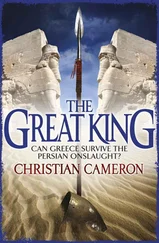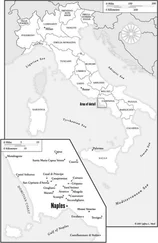Especially when looking back from the vantage point of modern rationalism, it is very tempting to suppose with E. R. Dodds and others that the ‘age of spirituality’ (as late antiquity has been called) grew out of the insecurity experienced in the third century, or, in other words, that people turned to religion, and perhaps especially to Christianity, in their attempts to find meaning, or to escape from their present woes. The persecuting emperors, Decius, Valerian and Diocletian, certainly believed that neglect of the gods endangered the empire’s security, and that deviant groups such as Christians must therefore be brought into line. In the same way, Constantine saw himself as specially charged by God to make sure that worship was properly conducted and properly directed. But it is one thing to suppose a general connection between religion and the desire for comfort, reassurance and explanation of suffering, and quite another to imagine that difficult times always call forth religious movements, or, to put it the other way round, that a religious development is always to be explained by reference to adverse social factors. Whether late antiquity was really more an age of spirituality than the periods that had gone before is itself now in question; it is an assumption which tends to hang together with the notion that paganism was discredited or somehow in decline, and that Christianity rose to fill the resultant gap. But this Christianizing view does not stand up to recent study of the lively and diverse religious life of the early empire, and the reasons for the growth of the Christian church and the spread of Christianity can only be located by a broad analysis, not simply by appeal to an alleged decline of paganism.
Christianization, and the profound consequences for the empire and for society of Constantine’s espousal of Christianity, form one of the strands which make late antiquity different from the early empire. But there were many others, among which we must give a special place to the series of reforms and administrative, economic and military changes which evolved during the fifty years (AD 284–337) covered by the reigns of Diocletian and Constantine. Though there were of course striking differences between them, which are vividly reflected in the surviving source material, we should also attempt to take a broad view, and to see their reigns as marking, when taken together, a fifty-year period of recovery and consolidation after the fifty-year ‘age of anarchy’, in Rostovtzeff’s phrase. Contrary to the usual emphasis, however, it was not so much Diocletian and Constantine themselves as personalities who managed to stabilize the situation, but rather a combination and convergence of factors, from which many of their ‘reforms’ in fact emerged piecemeal and ad hoc . Seen in this light, the mid-third century looks less like a time of ‘crisis’ from which the empire was dragged by the efforts of a strong and even a totalitarian emperor (Diocletian is often termed an ‘oriental despot’ because of his adoption of elaborate court ceremony in the Persian style), and more like a temporary phase in a developing and evolving imperial system.
IN SHARP CONTRAST with that for the third century, the available source material for the period starting with Diocletian’s reign, and more especially for the late fourth century onwards, is extremely rich and varied. This is attributable not only to the large amount of Christian writing but also to the sheer quantity of secular writing in both Latin and Greek. The amount of Latin writing surviving from the late fourth century in particular is such as to surpass even the age of Cicero, and to make this one of the best-documented periods in Roman history. Ammianus Marcellinus, the one great Latin historian after Tacitus, completed his Res Gestae in Rome in the early 390s, while the voluminous letters of Q. Aurelius Symmachus, a latter-day Pliny, give us an idea of the priorities and the constraints on a pagan senator of wealth and position, even if not one of the superrich who are unforgettably described by Ammianus (see below). In addition, this is the age of the great Christian writers, men such as Jerome, Ambrose and, above all, Augustine, whose Greek counterparts were Basil of Caesarea, his brother Gregory of Nyssa, Gregory of Nazianzus, and John Chrysostom, the twiceexiled bishop of Constantinople. All bishops, and all highly educated in the traditional secular style, these men carried on the great tradition of classical rhetoric, which they turned to Christian purpose in speeches such as the funeral oration which Ambrose delivered in honour of the Emperor Theodosius I (AD 395). Another example, the funeral speech on Basil, bishop of Caesarea, by Gregory of Nazianzus (AD 379) has been described as probably the greatest piece of Greek rhetoric since the death of Demosthenes. The fourth and fifth centuries represent the golden age of what is termed ‘patristic’ literature, works written by the great Fathers of the Church, men who, released from persecution during the reign of Constantine, now often took on the public role of statesman as well as that of bishop.
This is just to give a preliminary idea of the richness of the available literary material. Not surprisingly, it took some time to flower, given the apparent dearth of writing in the third century and the degree of social change which took place under Diocletian and Constantine. From the middle of the fourth century, however, we begin to see an upsurge of writing of several different kinds under the stimulus of a more settled social order which offered great opportunities to those with literary talent. Ausonius, a poet and rhetor from Bordeaux, rose to the very top and became praetorian prefect and consul after gaining the post of tutor to the future Emperor Gratian, while Claudian, a Greek-speaking Alexandrian, made his fame and fortune in Rome writing Latin panegyrics, highly elaborate and rhetorical poems in praise of the Vandal general, Stilicho, and Honorius, who succeeded his father Theodosius I as emperor in the west. The fourth-century emperors tried to curb social mobility by legislation, in the interests of securing the tax revenue; but a rhetorical, that is a classical, education was a path by which one could readily climb the social ladder.
In most cases the great churchmen of the day had also had a training in classical rhetoric. Accordingly, the relation of secular to Christian culture is not easy to define (see in particular Chapter X below), and sometimes the two came very close. The pagan philosopher and rhetor Themistius, for instance, served Christian emperors apparently without difficulty, and was actually out of favour during the reign of the pagan Julian (AD 361–3). The Emperor Julian, the only pagan emperor after Constantine and an interesting writer himself, had been brought up in early youth as a Christian. He became a pagan when he was effectively exiled as a boy after his older male relatives had been murdered by their rivals, the sons of Constantine, and when he was, rather surprisingly, allowed to come under the influence of Athenian Neoplatonism. Once emperor, he produced a number of offbeat works, all in Greek, including a satire called The Caesars , partly directed at Constantine, an invective against ‘the Galilaeans’, as he called the Christians (mostly in fact concerned with Moses and the Old Testament), a hymn to the sun-god (‘King Helios’) and a lampoon called ‘The Beard-Hater’ in which he defended himself against his unpopularity with the citizens of Antioch. Earlier, he had composed a panegyric on his hated Christian patron and predecessor, Constantius II (AD 337–61) in which he still kept his paganism concealed.
We must look at certain writers in more detail before turning to the non-literary sources. For the reign of Diocletian we are badly served by contemporaries, for no connected history survives, and it is necessary to rely to a large extent on the venomous Latin pamphlet On the Deaths of the Persecutors by Lactantius, a Christian convert and formerly a rhetor at the court of Nicomedia. Writing probably about AD 314, shortly after Licinius and Constantine had declared toleration for all religions in the so-called Edict of Milan, Lactantius’s object was to make an example of the horrible deaths that had befallen the persecutors of Christians, which he does in great detail, especially in the case of Galerius. This of course makes him a highly unreliable witness to the secular aims of Diocletian, who had initiated the persecution in AD 303; unfortunately the chapter which he devotes to Diocletian’s administrative and military reforms ( De mortibus persecutorum 7) is too often taken at face value. The relevant part of the Greek New History by Zosimus, the late fifth or early sixth-century pagan writer from Constantinople, is missing, but had it survived, it would of course have been equally misleading, since in direct contrast to Lactantius the pagan Zosimus praised Diocletian and blamed Constantine for every ill the empire had subsequently suffered.
Читать дальше
